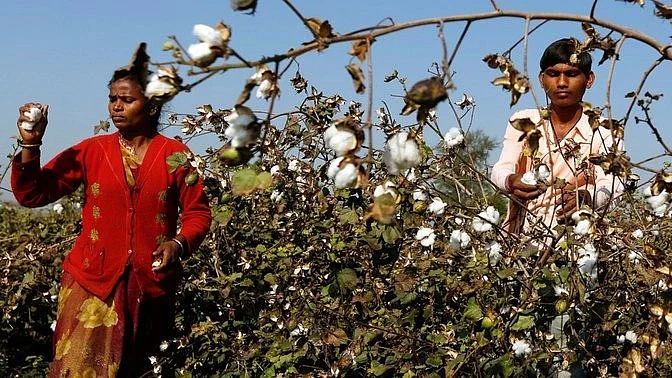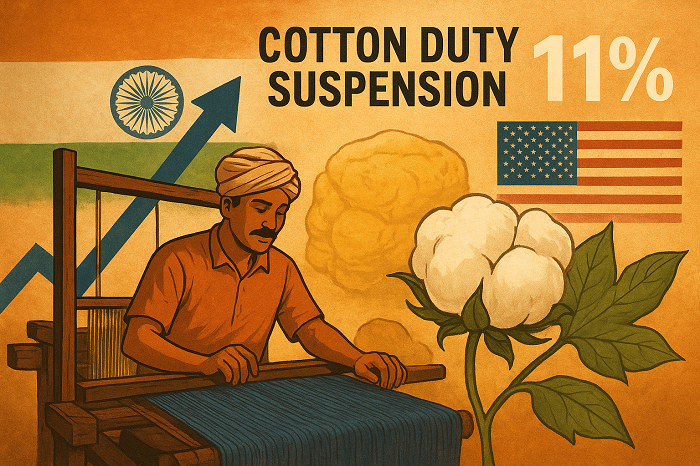
The global cotton market in 2025 is passing through a period of shifting trade relationships, geopolitical tensions, and the rising urgency for supply chain resilience. The International Cotton Advisory Committee (ICAC) report, particularly for May 2025 and Cotton Market Report June 2024, reveal how these forces are redrawing the map in terms of production, consumption, and trade flows worldwide. For the 2024-25 season, world cotton lint production is estimated at 25.8 million tonnes, slightly ahead of global consumption at 25.5 million tonnes. Yet, despite the apparent balance, trade forecasts have been revised downward to 9.45 million tonnes, largely due to reduced import demand from China.
The lasting echo of the US-China cotton dispute
The most disruptive undercurrent in the cotton trade remains the long-running dispute between the US and China. What began as a tariff war in 2018 continues to reverberate through supply chains. “These tariffs not only increased costs but also disrupted global cotton supply chains, forcing a re-evaluation of sourcing strategies,” notes the Cotton Review May 2024.
The brief thaw brought by the January 2020 Phase One trade agreement ended with its end in December 2021. Today, Chinese import tariffs on US raw cotton stand at 26 per cent for in-quota and 65 per cent for out-of-quota shipments. The US, in turn, levies tariffs ranging from 7.5 to 25 per cent on Chinese textile and apparel products.
This tension has driven China, the world’s largest cotton consumer at 8.3 million tonnes in 2024-25, to diversify away from US cotton, sourcing more from Brazil and Australia. Statistics reveal that in 2017, the US supplied 53 per cent of China’s cotton; by 2019, that share had fallen to just 22 per cent. By 2023, Brazil nearly matched US supply volumes to China.
Shifting trade baskets and new powerhouses
The knock-on effects are not confined to Asia. The US has broadened its sourcing network for textiles and apparel, increasingly relying on countries like Vietnam, Bangladesh, Turkey, Pakistan, Mexico, and India. Between 2017 and 2021, export values from these countries to the US saw notable growth—Vietnam by 6 per cent annually, with Bangladesh and Turkey each rising 5 per cent annually.
Several countries are moving to position themselves in the restructured cotton trade:
• Bangladesh is on track to become the world’s largest cotton importer in 2024-25, negotiating duty-free access for US cotton and setting up a dedicated bonded warehouse for these imports.
• Egypt is expanding domestic capacity, with imports revised upward to meet growing consumption.
• Indonesia is considering tariff cuts for US cotton rather than retaliating against tariffs.
• India has already consumed five times more cotton in the first half of the 2024-25 season than in the same period last year, while negotiating further US imports.
• Pakistan has boosted US cotton purchases and is exploring expanded imports of both cotton and soybeans.
• Vietnam is likely to slash tariffs to secure more US cotton.
Table: US cotton lint exports by partners and tariff impacts (2024-25)
|
Export Partners |
Percentage of total US cotton lint exports (2024-25) |
Previous rate |
Any retaliatory rate announced on US |
Updated rate by US |
Timeline |
|
China |
10% |
34% |
125% |
145% |
no timeline set |
|
Pakistan |
23% |
29% |
None |
10% |
29% paused until July 25 |
|
Turkey |
8% |
10% |
None |
10% |
no timeline set |
|
Vietnam |
17% |
46% |
None |
10% |
46% paused until July 25 |
|
Bangladesh |
5% |
37% |
None |
10% |
37% paused until July 25 |
|
India |
5% |
26% |
None |
10% |
26% paused until July 25 |
Table: World cotton lint balance sheet (2024-25 Est.)
|
Category |
Value ('000 metric tonnes) |
|
Production |
25829 |
|
Beginning Stocks |
17132 |
|
Imports |
9450 |
|
Consumption |
25527 |
|
Exports |
9450 |
Volatility ahead
The cotton sector’s challenges are not just about geopolitics. Competition from man-made fibers has been eroding market share for years, while new sustainability regulations add another layer of complexity. “Considering the complexity of the cotton value chain, the implementation of all these policy changes will be difficult and likely would add costs and audit fatigue to the value chain,” the ICAC warns.
Further uncertainty comes from climate-related risks such as drought conditions in Texas, a major US producing state and sluggish global GDP growth, both of which could squeeze exportable supply and demand alike. Yet, the industry has shown remarkable adaptability. By diversifying sourcing, negotiating tariff relief, and investing in logistics resilience, cotton producers and textile manufacturers are proving that the sector can face turbulent times though perhaps not without a few hiccups.











